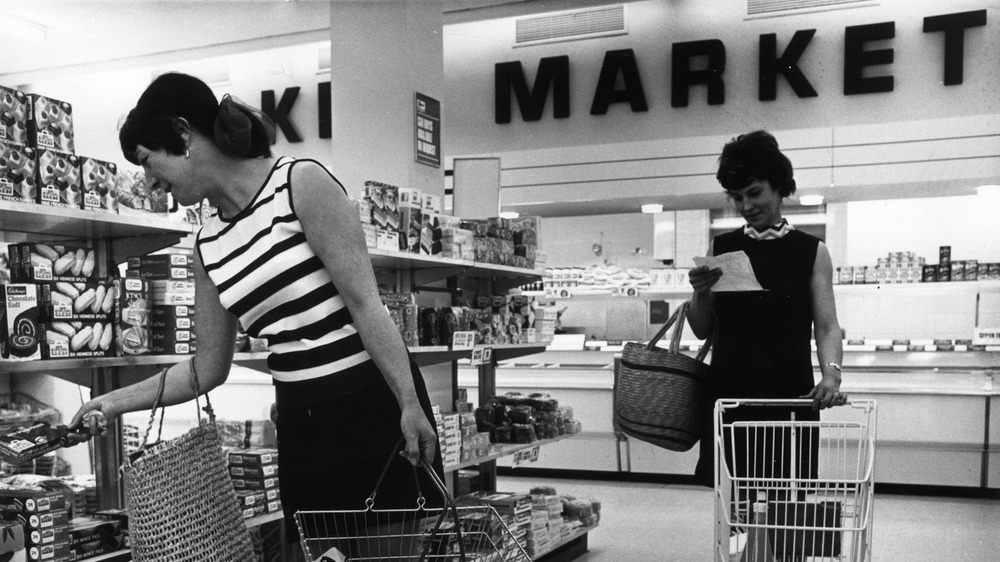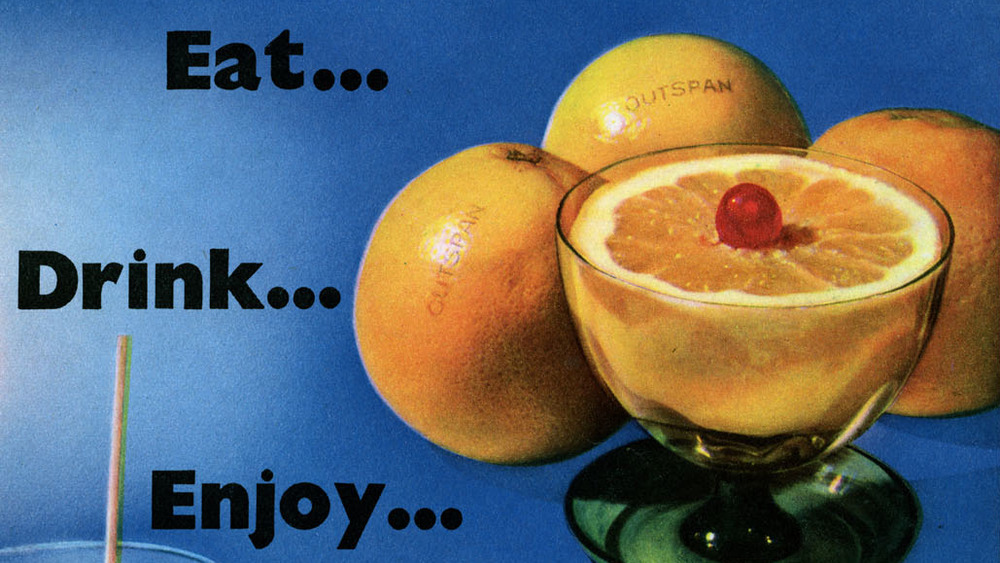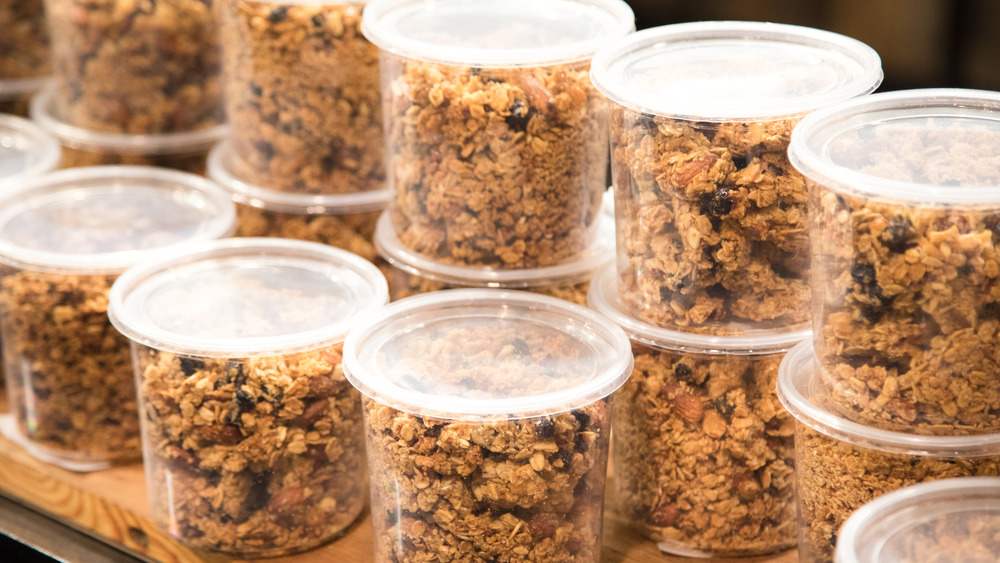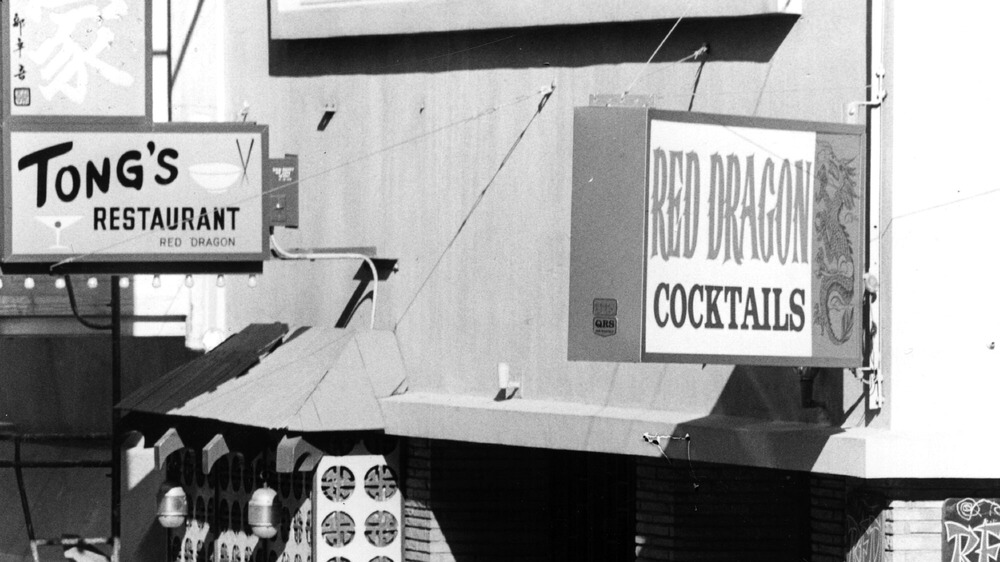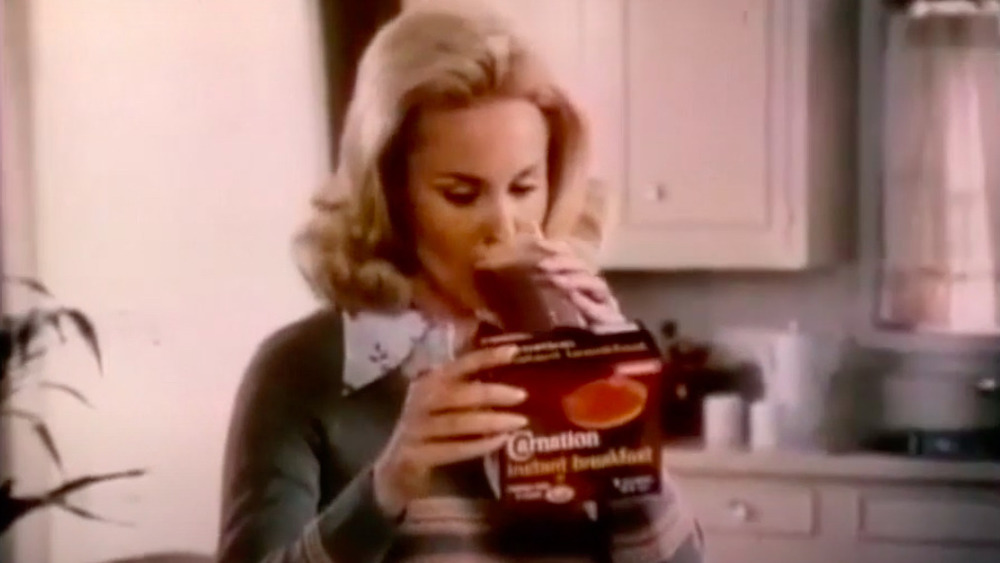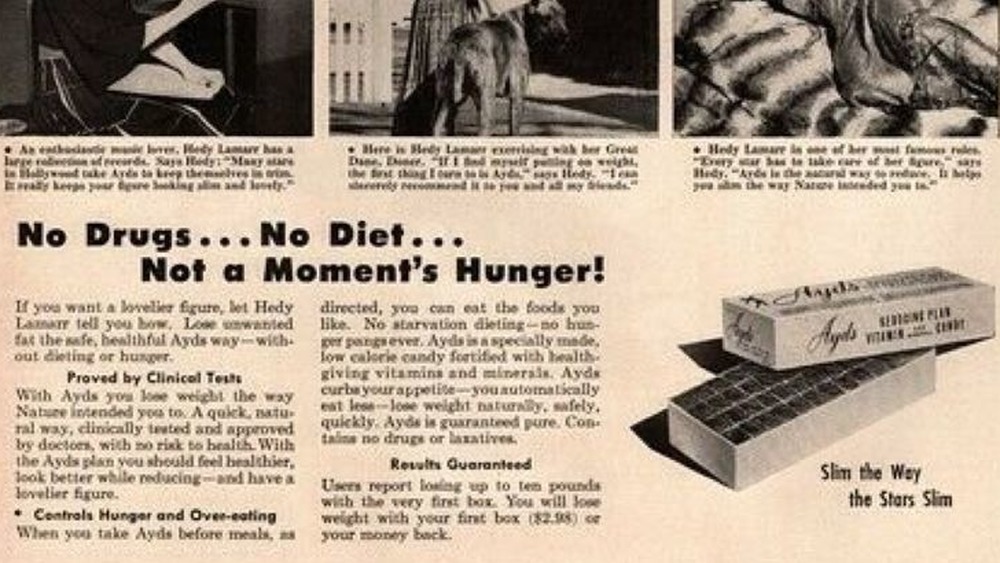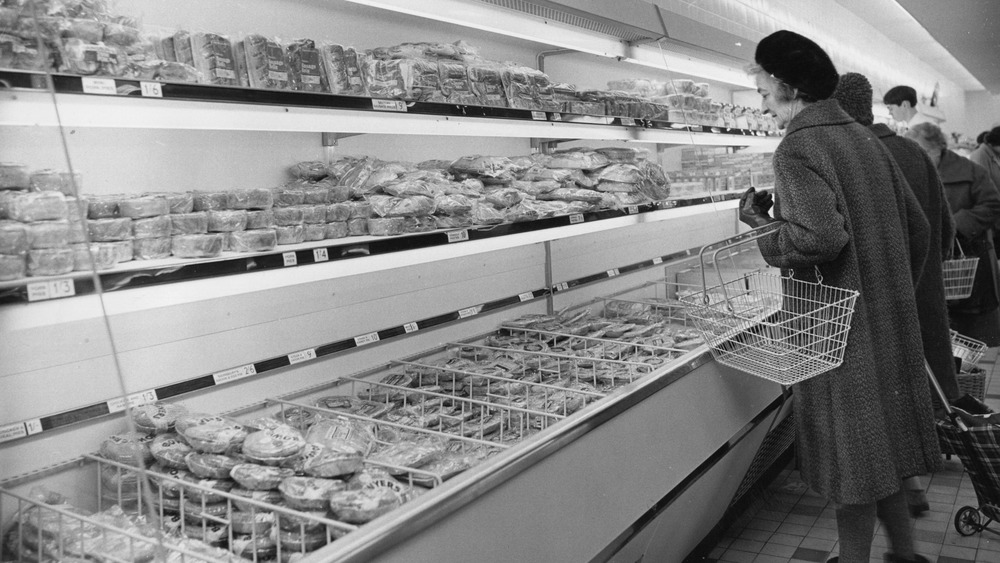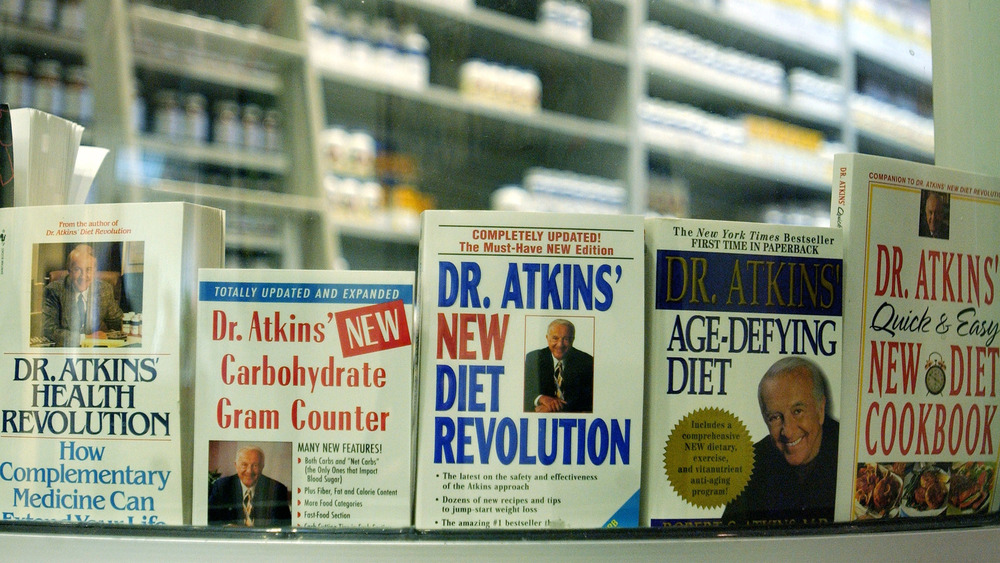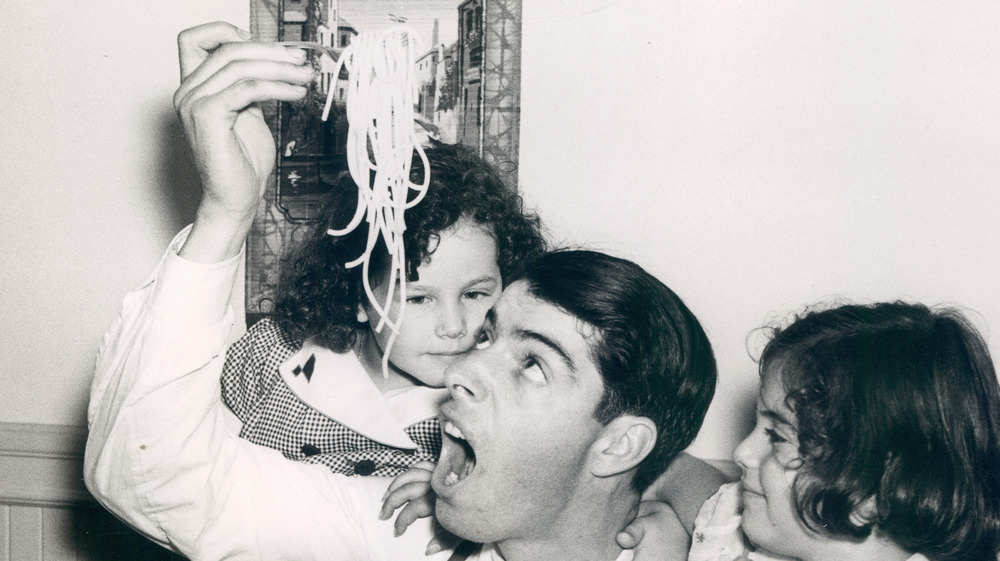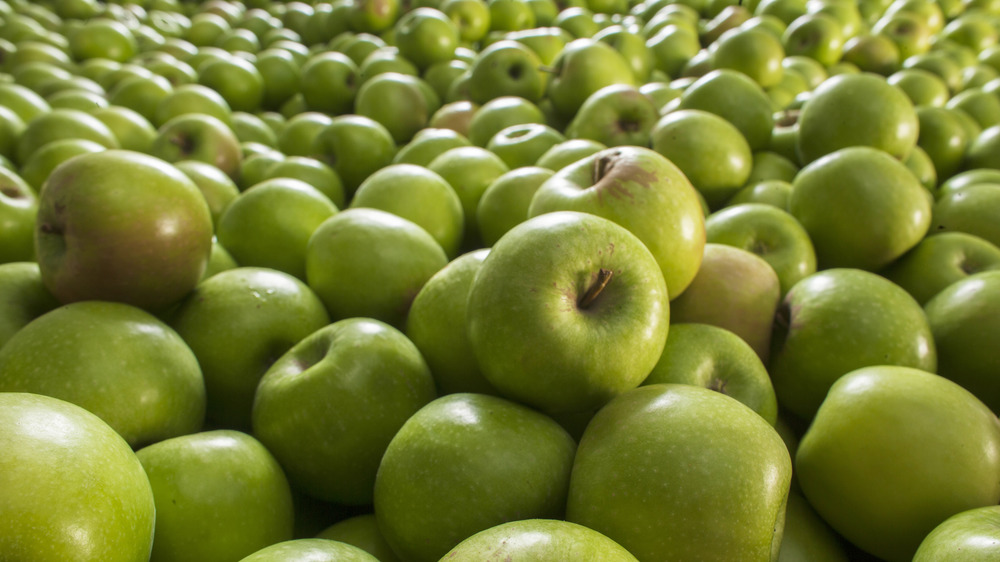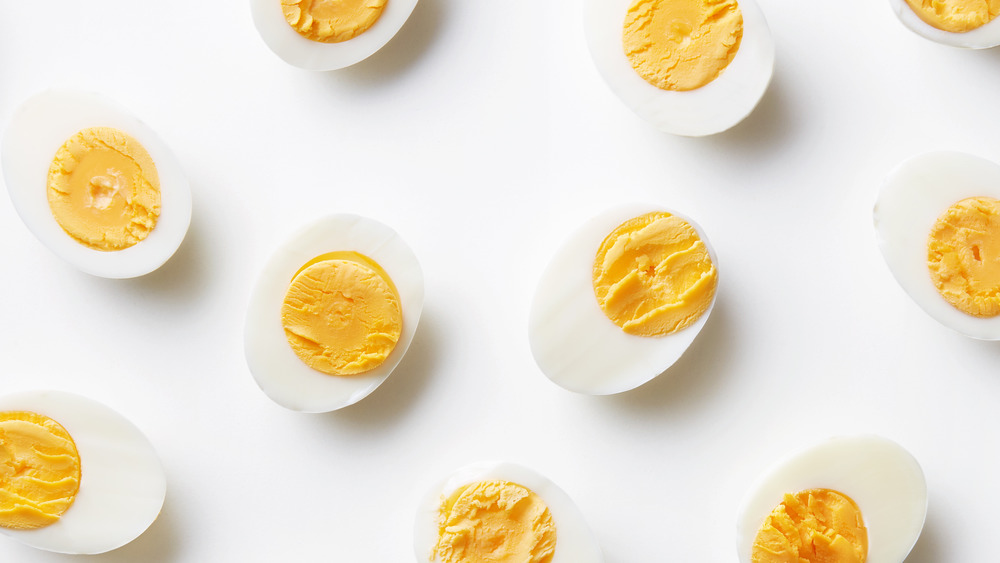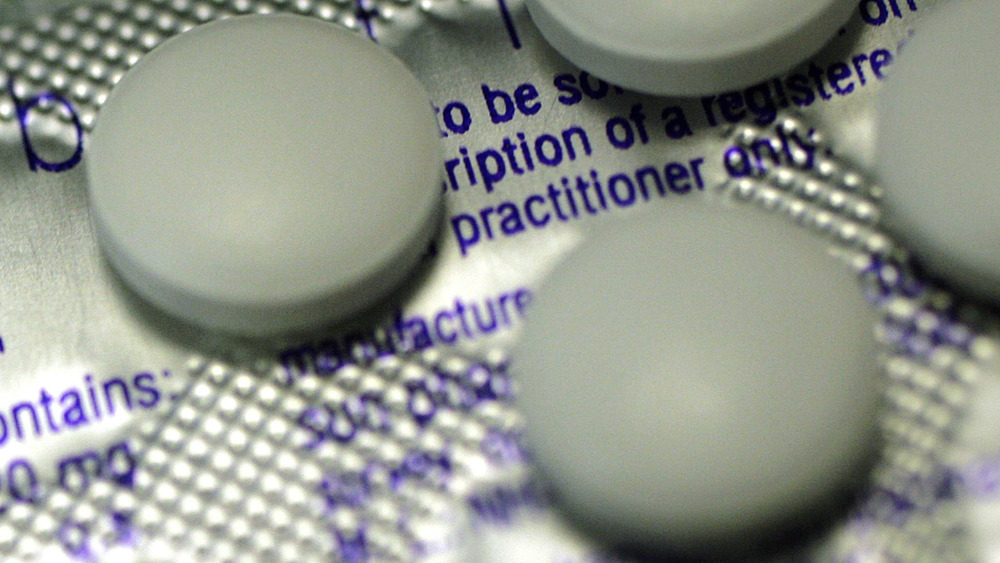How Healthy Eating Has Changed In The Last 50 Years
Humans have walked the earth for thousands of years, but it's only been since the last century that we've begun to really scratch the surface of understanding human health (via Splice Bio). Prior to the 1930s, for example, scientists did not realize that the flu was caused by a virus as opposed to a bacteria (via CDC). And it wasn't until 1945 that the flu vaccine became licensed for public use, and even then, it wasn't until the 1990s that the flu vaccine became consistently available and paid for by Medicare.
Now, compare that with the rapid rate of scientific discovery we've grown accustomed to today. For example, in the 15 months or so since the SARS-CoV-2 virus was identified, three vaccines rolled out to the public, albeit in phases (via CDC). When it comes to nutrition, knowledge is proliferating even more quickly.
For example, red meat went from being considered potentially unhealthy in 2018 to being completely absolved of all nutritional wrongdoing in 2019 to being deemed "suspect" yet again in 2020 (via Scientific American). Imagine how much our understanding of healthy eating has evolved over the last 50 years? Read on for a peek at the changes.
Grapefruit was seen as a magical weight loss elixir
Grapefruit has long been believed to contain "fat-burning" enzymes (via Healthline). The 1970s saw a resurgence of the "grapefruit diet," which has been around since at least as early as the 1920s (via Verywell Fit). Basically, the diet is low in calories, high in protein, and treats grapefruit as a fat-burning accompaniment — a veritable weight loss pill in the form of fruit.
Not surprisingly, if followed to the letter, the grapefruit diet can work extremely well for shedding pounds, but only because a typical day involves consuming less than 800 calories (via Healthline). That's essentially putting your body into starvation mode, which might work for a short while — the 12 or so days it takes to shed the up to 10 pounds various versions of the diet often promise. After that, however, this eating plan falls into the category of crash diets, which can slow down your metabolism.
In reality, grapefruit contains no "mysterious fat-burning properties," registered dietitian Kathleen Zelman told MedicineNet. But if you love grapefruit, go ahead and enjoy it. It is nutritious, low in calories, and it's rich in fiber, which can help fill you up.
The hippie culture gave us granola, which now wears a health halo for all the wrong reasons
Granola was invented in the 1800s by the founder of Kellogg's cereal as a combination of rolled oats, wheat flour, and cornmeal. However, it wasn't until the late 1960s that granola started taking off in popularity (via True North Granola). That was when it came to be sweetened with sugar and studded with raisins, coconut, and nuts. Calorie-dense and rich in fiber and protein, granola came to be seen as a healthy food and was associated with both hippie and health cultures (via Rolling Stone).
However, the granola of the 1970s was, in fact, a healthy food choice for people on the go, including hikers in need of a wholesome, calorie-dense, energy boost while out exploring nature. By contrast, today's mass-produced granola often includes sugar syrups, unhealthy fats, and chocolate chips. Sometimes it's even coated in candy (via Time).
In other words, it was not incorrect for granola to be seen as a healthy food 50 years ago, but the way granola is prepared today is far from healthy, as registered dietitian Andy Bellatti pointed out to Time.
Stir-fry heated up as a healthy alternative to the standard American diet
Although the first Chinese restaurant opened in the United States in 1849, "stir fry" wasn't invented until 1945, when a Chinese-American cookbook author coined the term to describe sautéing chopped meat and vegetables in a "wok" (a super-hot skillet with sloping sides), according to Leiden University. But Chinese cuisine remained under the radar until 1962, when esteemed heart surgeon Dr. Paul Dudley White praised Chinese-American chef Joyce Chen's first American-Chinese cookbook, Joyce Chen Cooks, for promoting healthier eating (via National Women's History Museum).
By 1967, Chen had her own cooking show on public television, exposing more people to her healthier alternative to the American standard diet. However, it wasn't until President Nixon's landmark visit to Beijing, China that Americans started actively seeking out — and learning to stir-fry their own — Chinese cuisine (via Time). Although Nixon noshed on not particularly healthy dishes like Peking duck, Chinese food had already become synonymous with a new and healthier vegetable-focused style of eating, and Americans of 50 years ago ate it up in the name of "healthy eating." Of course, we know American-Chinese food of today can be quite unhealthy.
Chef salad was considered a healthy restaurant order 50 years ago
Salads became popular in the U.S. at the turn of the 20th century, immediately coming to be associated with healthiness, according to Perfection Salad author by Laura Shapiro (via The Atlantic). However, many of the earliest salads weren't "healthy" so much as they were "hearty," including various forms of egg salad and Jell-O-based salads (Jell-O with fruit). That didn't seem to matter much, though, as long as you could call it a "salad." This explains how eating something like chef salad — lettuce topped with a ham, turkey, cheese, hard-boiled eggs, and mayo- or oil-based dressing — were still viewed as a "healthy eating" choice in the 1970s.
Many still assume if the name includes "salad," it must be healthy, according to Medline Plus. However, it is now well understood that, in the name of healthy eating, it's best to "steer clear" of chef salad, which is full of processed meats that contain "nitrite preservatives that may increase risk for cancer when consumed consistently" and cheese, which "can be a good source of calcium and protein, [but] is also high in calories, saturated fat, and sodium," according to Health Day.
Fifty years ago, the time had finally come for Americans to embrace meal replacement shakes
A 1974 ad for Carnation Instant Breakfast begins with the dramatic cracking of an egg and a bold statement, "It is hard to believe, but it's true," before delivering its novel-at-the-time hook. According to the announcer, the "total amount of nourishment" contained in a full breakfast consisting of a "poached egg, two strips of bacon, a slice of toast, and juice is in this glass of Carnation Instant Breakfast, for about 25 cents, including milk."
Carnation Instant Breakfast powder was not the first meal replacement "shake," but it certainly resonated with Americans — enough to make meal-replacement shakes the food of the then-present and future (via Timeline).
It's not that Carnation Instant Breakfast powder was better, per se, than its über popular 1960s predecessor, Metrecal (via Time). It's that Carnation chose this particular marketing strategy at a time when increasing numbers of American women were heading into the workforce and thus unavailable for morning kitchen duty. Plus, Americans were in the middle of a severe economic downturn, according to San Jose State University, so news of a cheap, hearty breakfast was welcome information.
Weight-conscious Americans found a way to eat cookies and candy and call it healthy
Today, eating candy and calling it "healthy" is second nature for many of us, as the Colorado State University Extension's blog Live Smart Colorado explained. Since some candy bars offer actual nutritional benefits (e.g., Payday, which boasts 7 grams of protein along with calcium, iron, fiber, and potassium), that's not a bad thing necessarily. But sometimes it means we're eating "energy bars" in the mistaken belief they're offering something significant beyond calories and a blood sugar crash.
So, how'd we get here? You might want to blame the 1970s. That's when one of the top-selling weight-loss products was AYDS candy, according to Hoaxes, which confirmed this is not a hoax. AYDS came in a bon-bon box and promised appetite suppression thanks to an oral anesthetic (via St. Louis Post-Dispatch). The 1970s also saw the rise of Dr. Sanford Siegel's cookies, which promised weight loss if you ate nine per day along with one 500- to 700-calorie meal (via U.S. News and World Report).
The Basic Four food groups had their heyday 50 years ago
Fifty years ago, the U.S. Department of Agriculture (USDA) recommendations for what constituted a healthy American diet looked quite different from current USDA recommendations. Starting in the 1950s, Americans had been taught to eat from the "Basic Four" food groups of milk, meat, fruits and vegetables, and grains, with the goal of "getting enough nutrients," according to the Indiana University Health's Riley Childrens Health.
However, as scientific studies regarding health and nutrition proliferated throughout the 1970s, the Basic Four began falling out of favor because, among other things, it failed to address what Americans were eating too much of (e.g., saturated fat, sodium, cholesterol) while giving unnecessarily short shrift to fruits and vegetables.
A new USDA-recommended eating plan came out in 1979, the "Hassle-Free Food Guide," which took into account the foods Americans needed to eat less of, although it didn't emphasize fruits and vegetables by giving them their own separate categories the way today's MyPlate does (via eMedicineHealth). Since Americans are significantly more obese than Americans 50 years ago, as a 2016 research paper published in PLOS One demonstrated, it seems that nutritional recommendations remain a work in progress.
Everyone was encouraged to drink cow's milk
In the present-day U.S., cow's milk-based dairy products are taking quite a beating in the court of public (nutritional) opinion. According to Rocky Mountains Health Plans, they're blamed "for everything from weight gain to bone injuries," and "some sources even claim that humans should never, ever drink milk or consume dairy."
Whether dairy deserves such harsh words or not, let's just say that 50 years ago, milk was not just beloved but idealized by many nutrition experts. Milk was considered so nutritious, in fact, that in a 1974 television commercial for Carnation Instant Breakfast seemed compelled, as part of its marketing strategy, to downplay milk's importance. "Milk supplies substantial nutrition," the announcer conceded, "but it's the Carnation Instant Breakfast powder that turns milk into a meal."
As compelling as that was in the mid-1970s, the demand for milk "has been in a free fall for decades," according to Forbes, with U.S. milk consumption having dropped a full 36 percent since 1970.
The 1970s saw the dawn of the low-carb diet
Florida physician Dr. Irwin M. Stillman believed the key to weight loss was "large quantities of water, coupled with the ingestion of high‐protein foods and the avoidance of carbohydrates and fats," according to The New York Times. In 1967, Dr. Stillman laid out his low-carb diet plan in his best-selling book, The Doctor's Quick Weight Loss Diet. His specific plan was roundly criticized by other physicians as potentially harmful, and in a 1974 research paper published in the journal, Nutrition Reviews, a team of scientists took the "currently popular dietary method" to task for its role in raising serum cholesterol levels.
But that didn't stop the Atkins Diet from staking its claim to low-carb weight-loss fame beginning in 1972, when Dr. Robert C. Atkins' bestselling book, Dr. Atkins' Diet Revolution: The High Calorie Way to Stay Thin Forever, was published. Although also derided by "mainstream health authorities" according to Healthline, the Atkins diet has managed to survive to this day.
Carb-loading in the name of good health became a thing in 50 years ago
'If you want to trace Americans' fear of fat, the place to start is the U.S. Senate, during the steamy days of July 1976," according to NPR. "If you look at the statistics, members [of Congress] were dying [of heart attacks] at a rather large rate," Senate historian Don Ritchie explained. This apparently marked the point in time when fat came to be "fingered as the villain."
Accordingly, and as wild as it might sound these days, Americans began "replacing milk and cheese and fatty meat with carbohydrates, with pasta and potatoes and rice," according to the author of Why We Get Fat, Gary Taubes. However, 1970s America had apparently missed the point, which was to replace fat with "whole grains, fruits and vegetables."
According to registered dietitian Andrea Docherty, there is something to be said in favor of carb-loading as it pertains to long-distance running (via Andrea Docherty Nutrition). However, Docherty recommends doing so with healthy plant-based items such as rice, beets, oatmeal, squash, and cereal. And she points out that you may even put on a few pounds as a result.
Ultra-restrictive almost nonsensical diets were trending 50 years ago
As of 2021, most of us are well aware there is reason to be concerned about extremely restrictive diets. But 50 years ago, there was a lot of interest in restrictive diets. In fact, the more restrictive a diet, the more attention it tended to get in the 1970s media. That's likely why the '70s are associated with such strange diet trends as the The Last Chance Diet, which is now understood to be potentially deadly, the resurgence of the Master Cleanse and grapefruit diets, and the Israeli Army Diet (via enAcademic).
The Israeli Army Diet, which had no actual connection to the Israeli Army, required the eating of nothing but apples for two days, followed by two days of cheese, two days of lean meat, and then two days of salad. As expected, people lost weight on this diet, but it was not sustainable. That said, it was billed as an eight-day crash-diet solution, so it was never intended to be sustained. Today, it's gone the way of other 1970s fads like disco, pet rocks, fern bars, and leisure suits.
That eggs and wine diet meme you heard about in 2018 actually originated some 50 years ago
In 1977, Vogue magazine published one of the most extreme diets we've ever heard of (via Vice). The "Vogue diet," aka the "wine and eggs diet," promised a 5-pound weight loss in just three days. All one had to do was consume nothing but eggs, steak, and wine, with black coffee being optional (via MoreFM). Specifically, the diet required an egg for breakfast and two eggs for lunch, both meals to be washed down with a glass of white wine, and then a 5-ounce steak for dinner, washed down with any wine remaining in the bottle — every day for three whole days.
According to the Mirror, the diet first showed up in the early '60s when it was published in Helen Gurley Brown's Sex and the Single Girl: The Unmarried Woman's Guide to Men (via MoreFM). The author believed the diet would make a person feel "sexy, exuberant, full of the joie de vivre". That likely had more to do with the wine than the eggs, we'd imagine.
How beautiful people stayed slim in the 70s
In 1973, Italian socialite Luciana Avedon published The Beautiful People's Diet Book, which explained how the "beautiful people" (read: rich, skinny, and fabulous) stay so slim (via The New York Times). The former Princess Pignatelli's credentials? Avedon was, in fact, one of the "beautiful people," and according to the 1973 New York Times report, she "had done her homework" — that is, she talked to doctors "and explored all the avenues her friends have used for slimming".
That being said, it appears that much of Avedon's advice involved tactics designed to avoid eating altogether (via Into The Gloss). Her go-to weight-loss method was eating half her lunch, skipping dinner, and going to bed with an apple and a book — although it's not clear whether she actually ate the apple since she also noted "one of the unsung merits of reading is that it keeps your hands so busy that it's awkward to be messing about with food." As far as she and the rest of the beautiful people were concerned, bread was a hard no, as were all fruits and vegetables other than artichokes, asparagus, tomatoes, avocados, and grapefruit.
Fifty years ago, eating healthy might involve popping diet pills
In The Beautiful People's Diet Book, Italian socialite and member of the "beautiful people," Luciana Avedon advised those who wished to be like her to, more or less, forgo all inessential food consumption. How she managed, we can't claim to know. What we do know, however, is that during the 1970s, diet pills containing the drug phenylpropanolamine (PPA) were commonly used by those who wished to be slim but lacked whatever it was that Princess Pignatelli had (via The New York Times).
What was not yet known 50 years ago is that PPA-based diet pills could cause scary and potentially deadly side effects, such as hypertension and stroke. All the way through the 1970s, the Food and Drug Administration deemed these pills safe at the dosages then sold over the counter. Although public perception began to sour starting in 1981 as researchers began connecting the dots, would-be dieters could still purchase PPA-based diet pills over the counter for another close-to 20 years. And they did.

